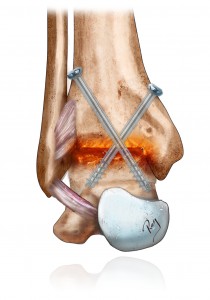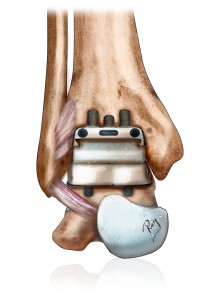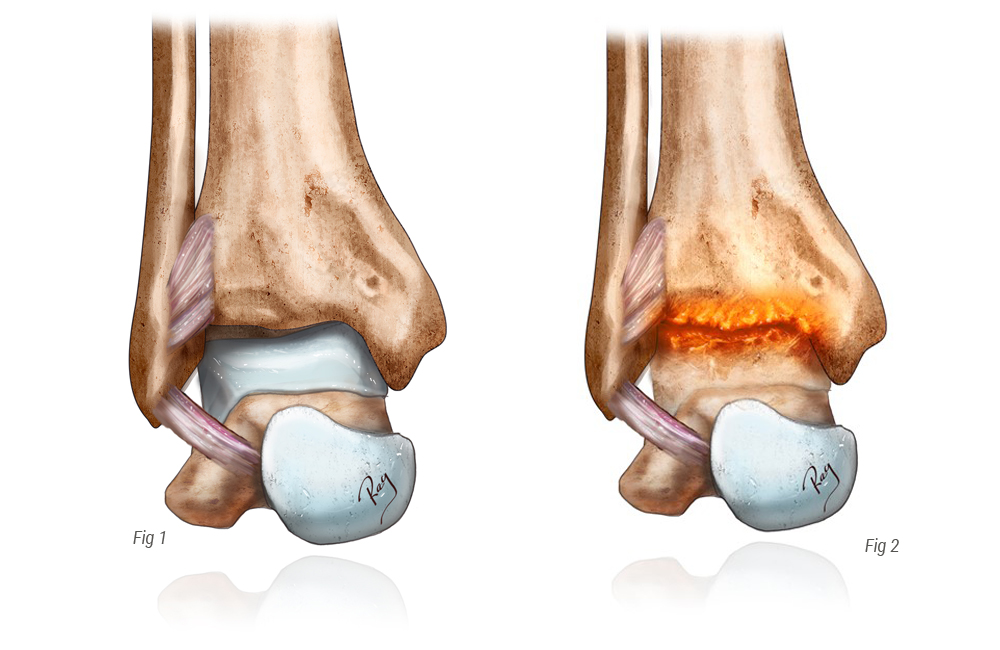When the condition is minor and the main discomfort is due to the presence of osteophytes and their conflict, arthroscopic surgery for cleaning purposes may be proposed. It consists of excising any bone spicules entering into contact with each other, thereby limiting mobility and causing pain. This surgery should be offered with caution as only 50% of patients respond positively to this kind of procedure and a surgeon experienced with this type of surgery must carefully select the cases requiring surgery.
When the arthritis is due to a bone-axis problem as a result of, for example, an old fracture, realignment of the limb by cutting the bone (osteotomy) can be proposed. This procedure will realign the loads and slow down the progression of the condition. Again, this involves complicated surgery and is only indicated in certain patients.
When the cartilage damage is too extensive, the joint must be sacrificed. Two options are then possible; Arthrodesis (blockage of the joint) and ankle replacement.
Arthrodesis is final surgery and is very effective in cases of ankle arthritis. It has long been the only option for this condition. It consists in completing removing the joint cartilage, placing the tibia and the talus into contact and fusing them together using screws, plates or nails. The mobility of the ankle is then zero but the foot partially takes over and patients tolerate this surgery surprisingly well. It is often the only reasonable option for young and active patients, in cases of severe ankle instability or in complex cases (axis problem, revision surgery following a previous failure, etc.).

Arthrodesis (blocking) of the ankle using screws

Ankle replacement
is an excellent alternative in older patients, who are usually less active. The procedure involves replacing the affected joint by a synthetic prosthesis. It allows a certain degree of mobility to be retained and preserves the biomechanics of the ankle. This indication is subject to certain conditions (sufficient bone stock, stable ankle, etc.) and should be discussed on a case-to-case basis. In common with any joint replacement, the implant has a limited life, which depends on the activity (usually 10-15 years), and will sometimes have to be replaced after a certain period of time. This kind of surgery is technically difficult and needs to be performed with great accuracy. Surgeons require extensive experience in this field.
For more information…



